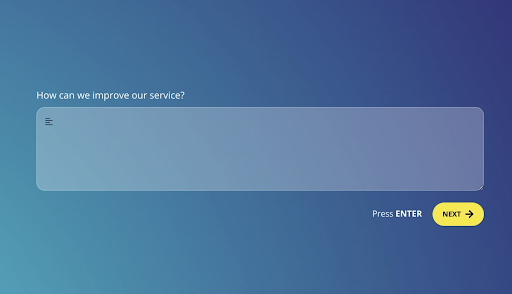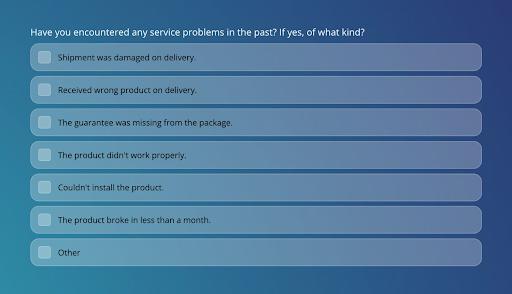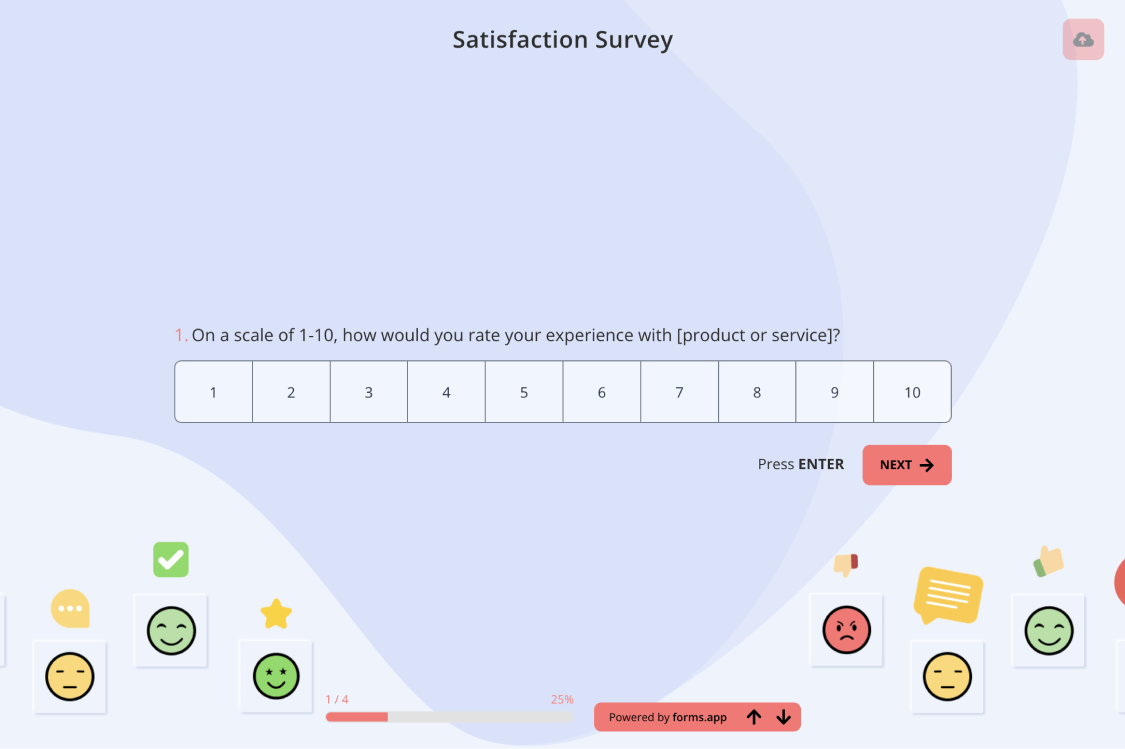
Are you interested in learning how to write good survey questions? If so, you’re in the right place! Asking visitors and paying customers the right questions will help you connect with your target audience, which means you’ll have more opportunities to boost engagement, sales, and customer satisfaction.
Following the best practices for writing good survey questions requires patience, persistence, and an eye for detail. If done correctly, you’ll see tremendous long-term growth by regularly conducting brand surveys.
In this article, we will show you a few specific benefits of surveys, reveal seven best practices for writing good survey questions, and end by sharing a list of survey questions you can use for your business today.
Let’s get started!
Why writing good survey questions matters
Conducting surveys is a terrific way to build a direct line to your target audience. Asking relevant questions will help you better understand their goals, pain points, and needs.
Imagine trying to help someone with a problem, but you have no idea what’s bothering them. Sounds difficult, right?
Good survey questions let you hone in and see how each person feels about your brand, products, and the industry as a whole. Reviewing responses will give you a deeper understanding of the people who visit your website and help you make decisions with their needs in mind.
When used this way, asking the right questions allows you to improve your products and website while gathering new ideas for future content and offers.
Now, it’s time to explore seven best practices to keep in mind writing good survey questions.
Best practices for writing good survey questions
Surveys offer valuable insights into your customers' preferences, behaviors, and needs. However, if your survey is poorly designed, or you’re not asking the right questions, this can lead to inaccurate data and misleading results. So, here are some best practices to keep in mind.
We suggest bookmarking this page or writing down the following practices so you can use them to create click-worthy questionnaires in the future.
Create with intent
The first thing you should do is decide why you want to create a survey in the first place. Understanding your intent and how it aligns with your marketing goals and customers' needs will help you choose the right questions.
For example, if you want to gather feedback on a new product, include questions that ask users how they're using the product, what they like, what they would change, and whether they have any suggestions for future updates.
Since the survey is centered around one thing – learning what people think about a specific product, you can bet that the results will match your intent and help you create a better experience for your customers.
Before you build your next survey, consider what you want to gain from the results. Understanding each survey's short- and long-term goals will help you ask the right questions.
Use clear language
Your survey questions should be easy for readers to understand. Use clear and concise language free of technical jargon and terms that may confuse your audience. If participants feel flustered halfway through because they don't understand a question, they may leave before clicking submit.
When people abandon forms, you lose out on actionable data and your readers' attention.
Avoid double negatives and complex sentence structures, as this could lead to extra confusion.
For instance, it’s a good idea to ask questions like "Are you satisfied with our product?" This type of structure is simple and to the point, which means your audience will have an easier time giving accurate answers.
We recommend taking your time and developing questions for your survey. It’s a good idea to ask your team to share their thoughts since many interact with customers daily. Your customer service agents know how people respond to specific questions and can help you choose clear language.
Ask open and close-ended questions
Both open and close-ended questions have unique strengths and weaknesses that will help you gather qualitative data about your target audience.
Open-ended questions can help you elicit personalized responses from your customers, which means you’ll have an easier time understanding exactly what you can do to improve their experience.

Open-ended question example
The big drawback to open-ended questions is they are hard to measure since everyone’s answers are potentially wildly different from one another. So, reviewing their responses can help you learn more about individual needs, but you probably won’t have the right information to make large, meaningful changes.
Close-ended questions are a bit more targeted because everyone has to pick from a list of pre-selected answers. If you ask users how likely they are to recommend you to a friend, you can look at the median rating and immediately know how people see your brand.

Close-ended question example
If you want to get people interested in your survey, include both types of survey questions. When you use both, you can get specific answers with closed questions while giving your customers the chance to share their thoughts with open questions.
Create personalized surveys
It shouldn’t come as a surprise, but the flow and overall structure of your survey will have a direct impact on customer engagement. If survey questions don't flow logically, visitors may get confused and leave before clicking the submit button.
In my experience, it’s always best to start with simple, easy-to-answer questions to build respondents' trust. You'll also want to group related questions and avoid asking for sensitive information early in the survey.
When people understand how questions flow from one topic to the next, they're more likely to stick around to the end.
If you’re worried about missing important questions during the restructuring, don’t worry. The easiest fix is to include an open-ended text box at the end of your survey so users are free to share any final thoughts or feedback.
Use trust badges
Trust badges are an effective way to show people that other companies trust and respect your brand, which can improve your survey completion rates.
Simply put, trust badges are signals from reputable organizations, such as the Better Business Bureau, PayPal, and McAfee, that show users your survey is legitimate. When people see that your brand is trusted by a company they already know and respect, they're more likely to take your survey seriously.
If you're wondering about the effectiveness of trust badges, consider this: on average, forms with trust badges see a %42 higher completion rate.
We suggest placing trust badges on the survey invitation and within the form to increase visibility and credibility. This strategy can give respondents peace of mind when it comes to privacy and data security.
A/B test your surveys
A/B testing can help you identify effective survey questions, which is helpful for fine-tuning questionnaires of all types. Testing involves creating two versions of your survey and randomly assigning people to each group.
The goal of A/B testing is to identify which question or version of your survey yields the best results.
For instance, you could add a progress bar to half of your forms and leave the other half alone. If you notice that the version with the progress bar has a noticeably higher completion rate, you may want to make this a permanent addition to your survey strategy.
There are plenty of other elements you can test along the way. Here are some options to consider if you’re thinking about using A/B testing to improve engagement.
- Change the order of your questions
- Rephrase specific questions
- Add or remove images
- Reduce the number of questions and form fields
Test different questions and answer options, and there’s a good chance you’ll learn interesting things about your target audience and improve your engagement rate.
Examples of good survey questions
Now that we covered all of the major tips, it's time to look at a few examples of good survey questions. Each section features different themes ranging from brand awareness feedback forms to good survey questions for social media event invitations. Feel free to tweak these suggestions to fit your needs!
It's also worth noting that some of these questions may apply to multiple categories, so use your best judgment.
Questions examples for brand awareness surveys
Brand awareness determines how familiar a user is with your brand, products, and content. Here are some ideas for questions that will help you learn more about general awareness.
1. Where did you first hear about us?
2. Have you ever used our products/services?
3. How would you describe our brand to someone else?
4. Which logo do you associate with [your brand]?
5. Has your perception of [your brand] changed in recent months? If yes, how?
6. Where would you like to get to know us more?
7. In your opinion, which brands offer products most like what we offer?

Questions examples for brand awareness surveys
Questions examples for event surveys
A big part of gathering feedback is centered around events like webinars. Asking users questions about their experiences and expectations can help you improve the quality and engagement of your next social media event.
You can use these survey questions before or after, depending on your situation.
1. Which of the following topics would you like us to discuss in detail during [event]?
2. Which social media platforms would be best for our next webinar?
3. Would you watch a pre-recorded live event if the perceived value is worth your time?
4. What kind of promotional material would convince you to sign up for our event?
5. How frequently do you attend social media events?
6. How can we improve our next event?
7. How can we make our next event more interactive for you?
8. How likely are you to invite your friends to join our event?

Questions examples for event surveys
Questions examples for lead generation survey
Now, let's talk about lead generation surveys. These questionnaires are short and sweet because they ask for the users' names, email addresses, and usually a third optional question that's used for segmenting and personalization. Here are some ideas you can include in your next lead generation form.
1. What motivated you to sign up for our email list?
2. What are your current pain points concerning (industry topic)?
3. What kind of content would you like to receive in the future?
4. How did you first discover our brand?
5. How would you prefer to receive information about products/services? [when using marketing strategies like push alerts]
6. Which of the following promotions do you see as most valuable?
7. Would you like to learn more about our loyalty program?

Questions examples for lead generation survey
Question examples for product and general satisfaction surveys
Finally, let’s take a look at some general question examples that you can use on various product and satisfaction surveys. The responses to these questions can help you gather actionable feedback and improve your business and products in many different ways.
1. On a scale of 1-10, how would you rate your experience with [product or service]?
2. How would you rate our customer support?
3. If you could improve one thing about [product or website], what would it be?
4. Which product features do you find most valuable?
5. Would you recommend our [product or brand] to a friend?
6. How can we make our product easier to use?
7. How does our brand compare to similar products you've used in the past?
8. Would you be willing to write a review so others can learn from your experience?
9. Are you interested in receiving promotional offers or content?
10. What products or features do you want to see from us in the future?

Questions examples for product and general satisfaction surveys
Final thoughts
Including good questions on surveys and other feedback, forms can help business owners and marketers like you in many different ways. If you follow the best practices and examples discussed today, you'll have a better chance of connecting with your audience and growing your brand over time. People are more likely to engage with businesses that try to talk to them first.
The only thing left for you to do is get out there and create a survey that will catch your audience's attention.
Sena is a content writer at forms.app. She likes to read and write articles on different topics. Sena also likes to learn about different cultures and travel. She likes to study and learn different languages. Her specialty is linguistics, surveys, survey questions, and sampling methods.



 9 min ler
9 min ler

